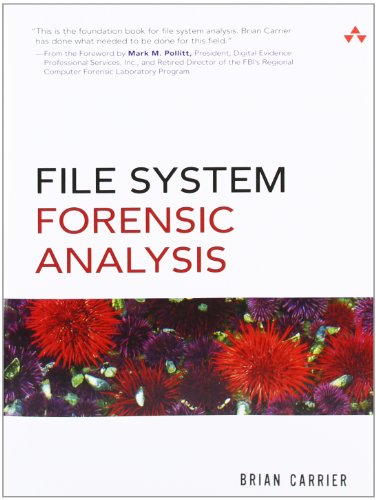File System Forensic Analysis pdf
Par jefferson ismael le vendredi, avril 7 2017, 15:32 - Lien permanent
File System Forensic Analysis. Brian Carrier

File.System.Forensic.Analysis.pdf
ISBN: 0321268172,9780321268174 | 600 pages | 15 Mb

File System Forensic Analysis Brian Carrier
Publisher: Addison-Wesley Professional
Understanding EXT4 (Part 1): Extents · 3 comments Posted by Hal Pomeranz Filed under artifact analysis, Computer Forensics, Evidence Analysis While I had read some of the presentations[2] related to EXT4, I was curious about how the EXT4 structures actually looked on disk and how and why the changes made in the EXT4 file system broke existing forensic tools. So I decided to fire up the old hex editor and see for myself. File System Forensics by Brian Carrier. Finally, we will cover the emerging intersection of digital forensics and traditional security, specifically mobile app security and continuous forensic monitoring of key systems. Most digital forensics evidence is stored within the computer's file system, but working with file systems is the most technically challenging aspect of forensic analysis. Sorry if this is in the wrong place but I have tried to find articles about this topic but they all seem to be dead discussions or not directly related. This video provide File System Forensic Analysis using Sleuthkit and Autopsy. The $UsnJrnl file contains a wealth of information about file system activity which can provide more context about what occurred on a system. For example, chapter 4 is dedicated to the HFS+ file system used by Macintosh computers and drills down to disk level file system forensics. This video also contain installation process, data recovery, and sorting file. Many of yours (WFA/Registry/Open Source-you and Altheide), Handbook of Digital Forensics and Investigation (Casey), Iphone and iOS Forensics / Android Forensics (Hoog), File System Forensic Analysis (carrier) etc. Backup files are provided from the “custodian”. I have been spending some time reading File System Forensic Analysis by Brian Carrier which is considered by many to be the primary resource on the subject of file system forensics.